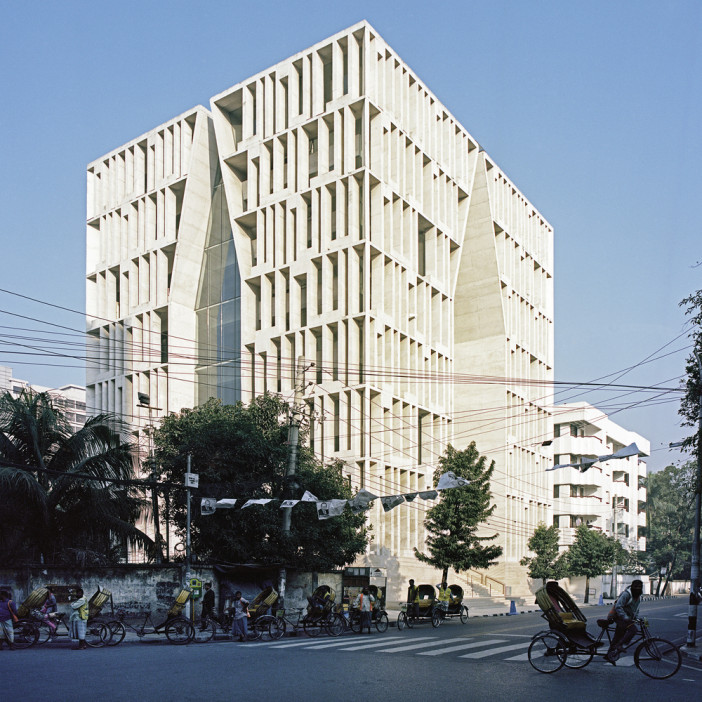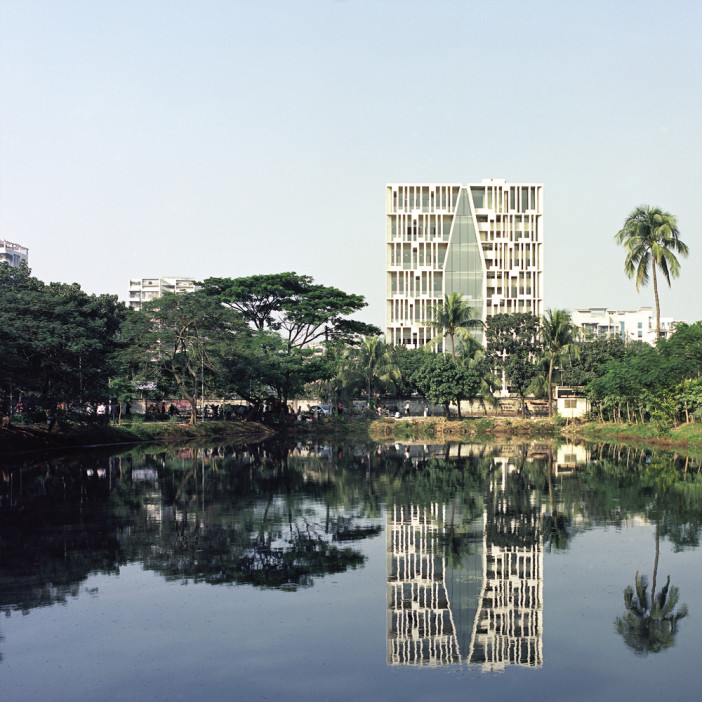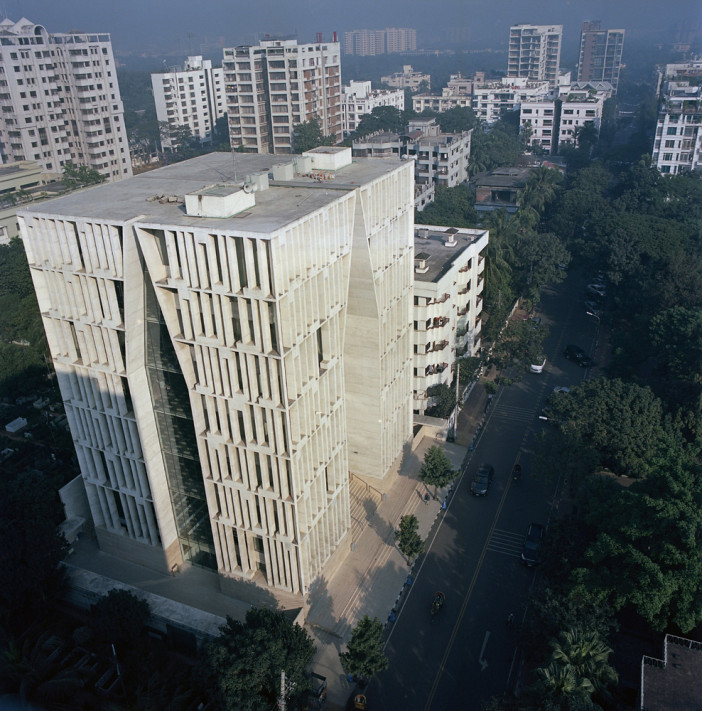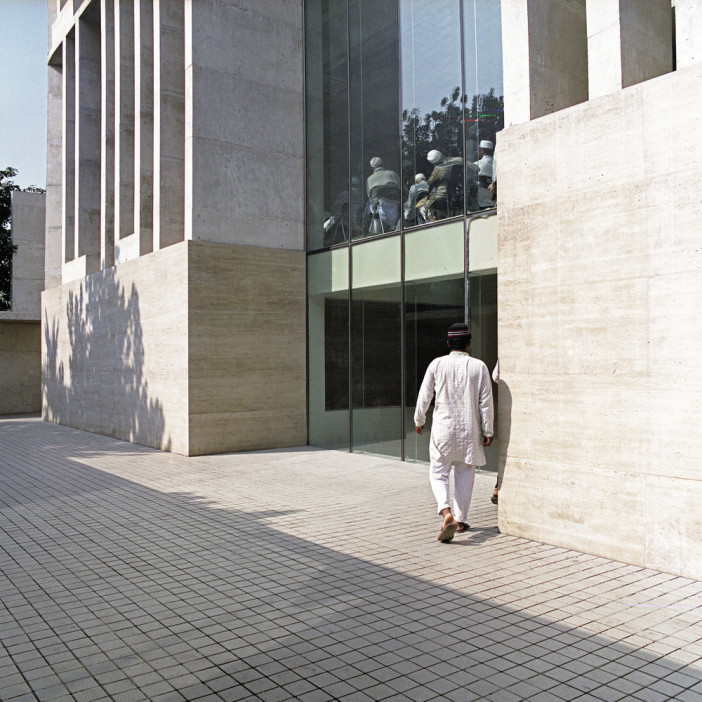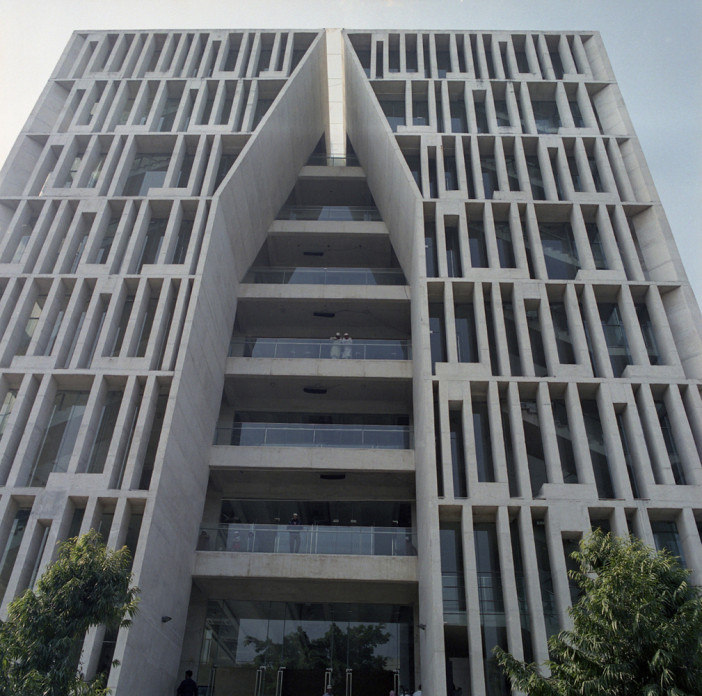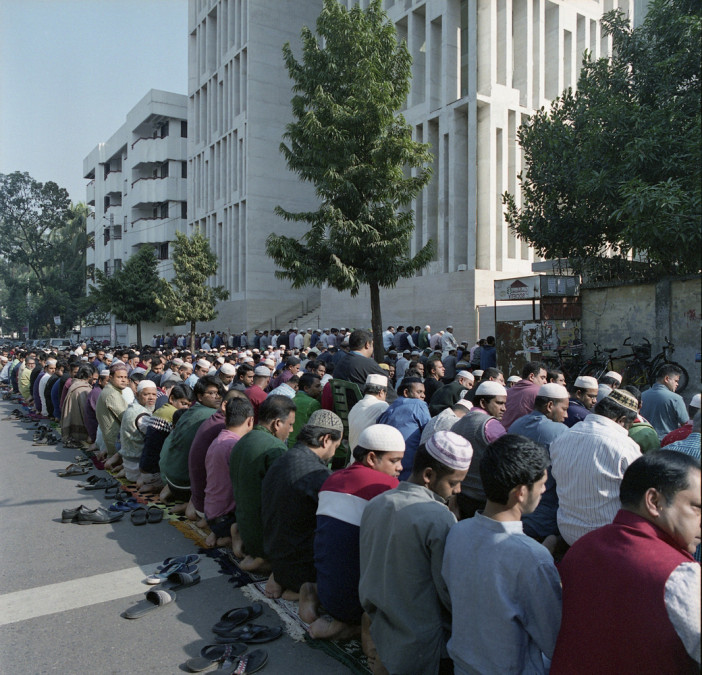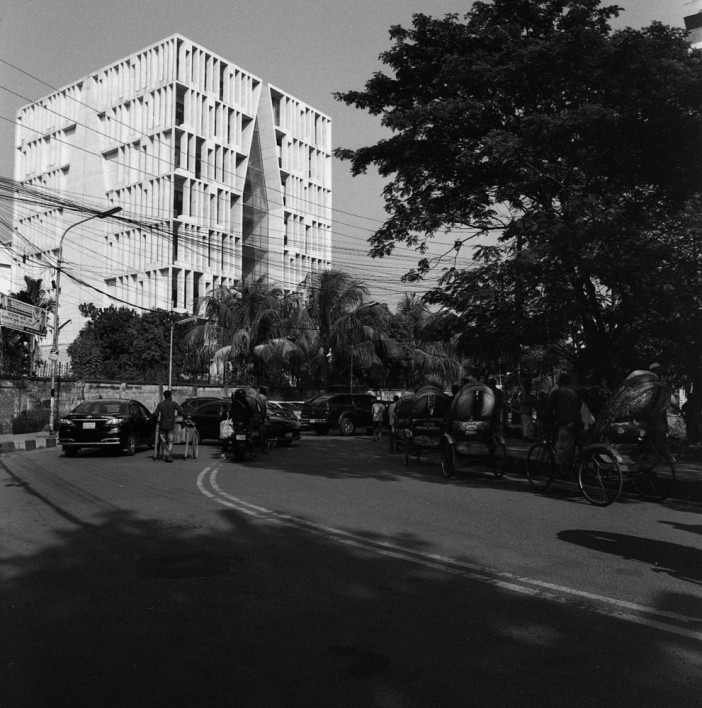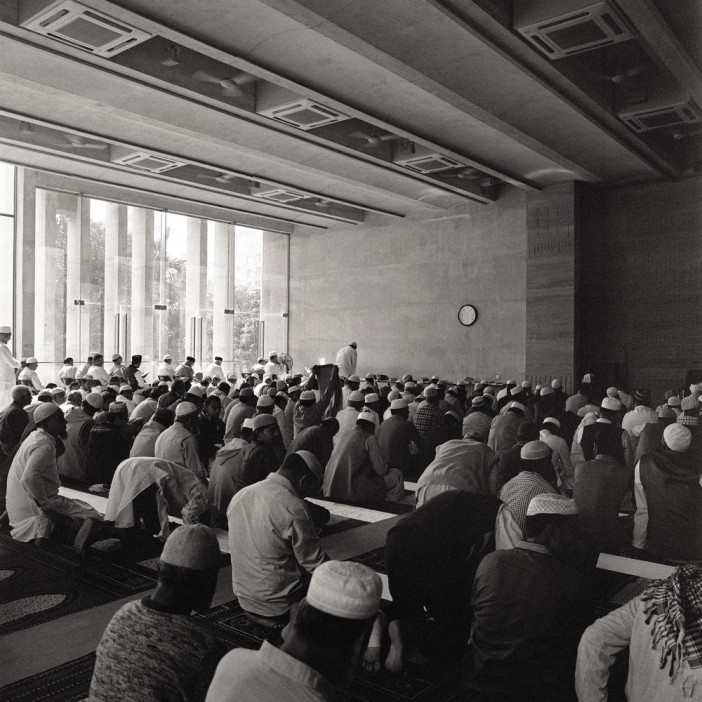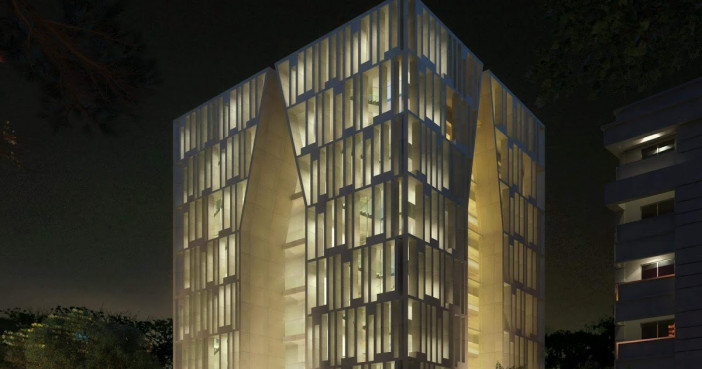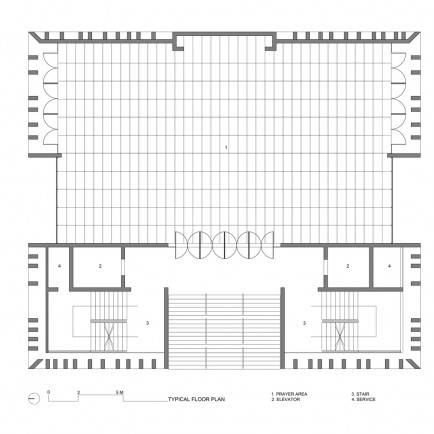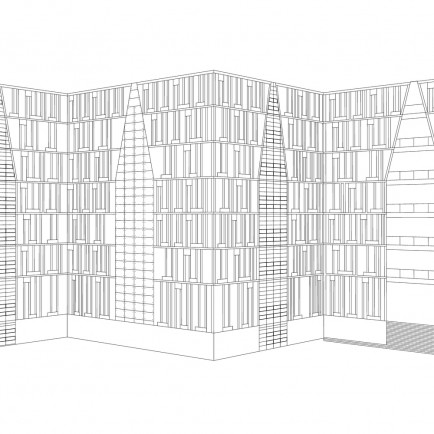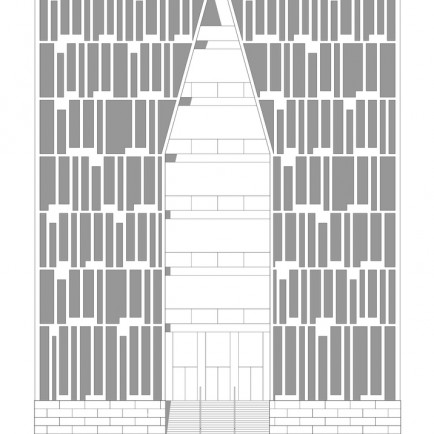Gulshan Society Mosque
History
The urban plot allocated for this
mosque was relatively small but survey suggested that the mosque would need to
accommodate a large congregation. This necessitated reimagining the mosque
typology into a vertically stacked volume. Planned for 2500, the building is
presently attended by up to 4500 people for the weekly Friday prayer.
Because of the limited size of the
plot the court-prayer hall sequence had to be substituted for a pragmatic
approach. The entrance, for example, is immediate: a flight of steps from the
sidewalk directly leads to the main vestibule and prayer hall. All floors are
accessible by generous stairs and elevators, taking visitors to six upper
levels.
All interior spaces benefit from good penetration of natural light and ventilation. The latter is made possible by the employment of a jali or screen structure, which wraps the building and generates its unique form and façades, while ensuring protection from rain and solar heat gain. The jali is an abstraction of “La-ilaha-illallah” – a fundamental declaration in Islam proclaiming, there is no God but God in Arabic – in the thousand year old Kufic script, which runs continuously in bands on all four sides.
Description
*Structural Engineering
Zayedur Rahim
*Electrical Engineering
Abul Kalam Azad
*Plumbing Engineering
Prodip Kumar Haldar
Details
Location
Gulshan, Dhaka, Bangladesh.
Worshippers
2400
Owners
Gulshan Society
Architect Name
Year of Build
2017
Area
741 sqm
Drawings
Map
History
The urban plot allocated for this
mosque was relatively small but survey suggested that the mosque would need to
accommodate a large congregation. This necessitated reimagining the mosque
typology into a vertically stacked volume. Planned for 2500, the building is
presently attended by up to 4500 people for the weekly Friday prayer.
Because of the limited size of the
plot the court-prayer hall sequence had to be substituted for a pragmatic
approach. The entrance, for example, is immediate: a flight of steps from the
sidewalk directly leads to the main vestibule and prayer hall. All floors are
accessible by generous stairs and elevators, taking visitors to six upper
levels.
All interior spaces benefit from good penetration of natural light and ventilation. The latter is made possible by the employment of a jali or screen structure, which wraps the building and generates its unique form and façades, while ensuring protection from rain and solar heat gain. The jali is an abstraction of “La-ilaha-illallah” – a fundamental declaration in Islam proclaiming, there is no God but God in Arabic – in the thousand year old Kufic script, which runs continuously in bands on all four sides.
Description
*Structural Engineering
Zayedur Rahim
*Electrical Engineering
Abul Kalam Azad
*Plumbing Engineering
Prodip Kumar Haldar


